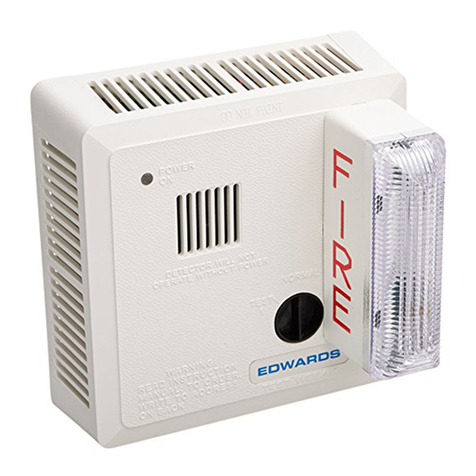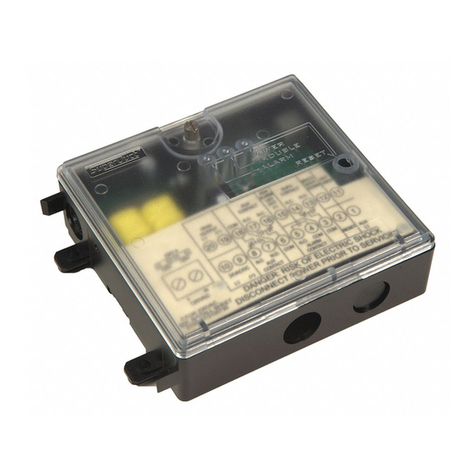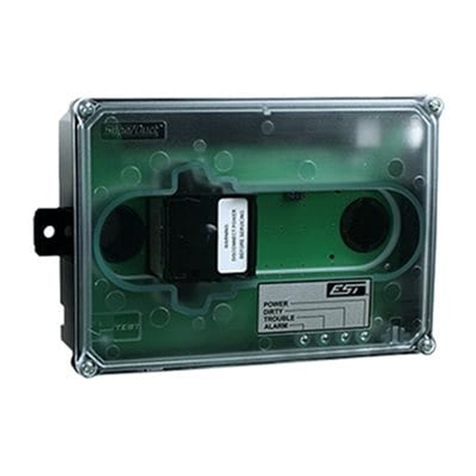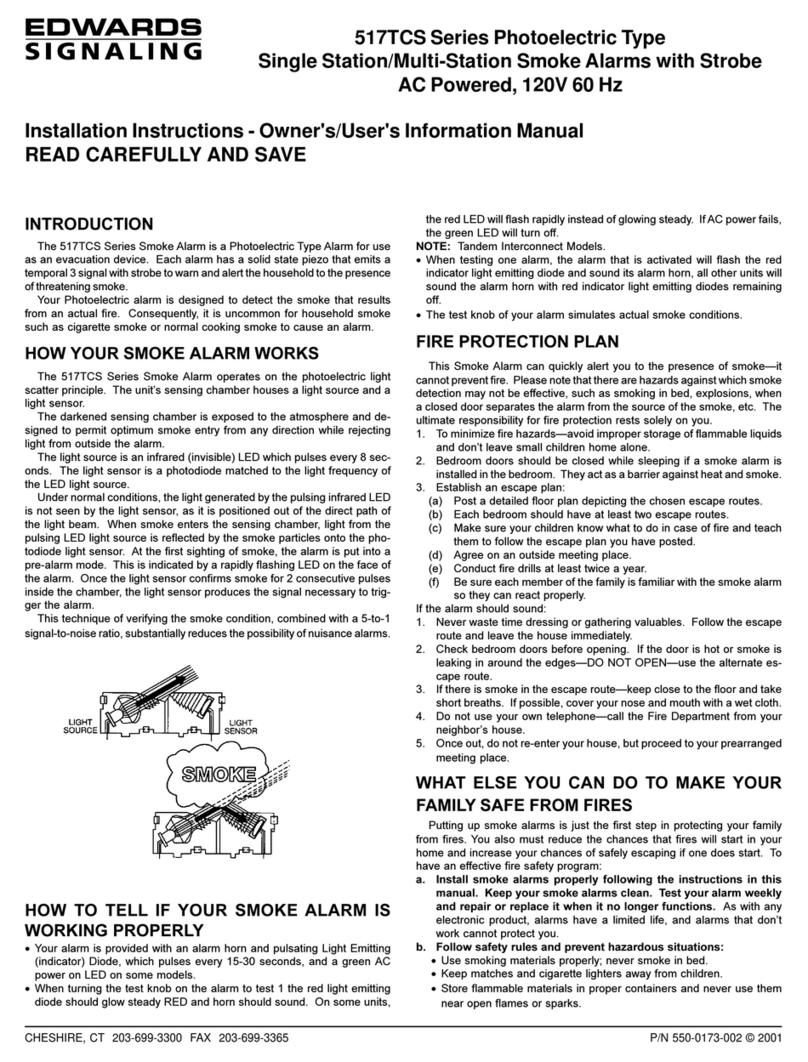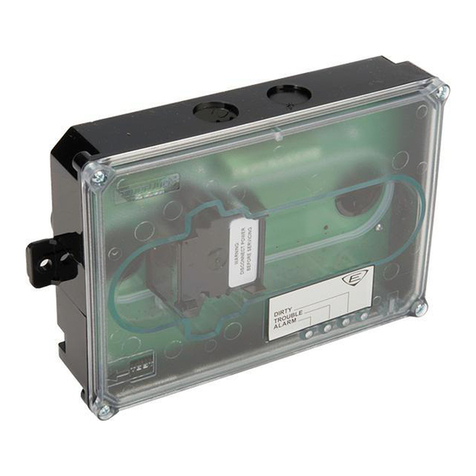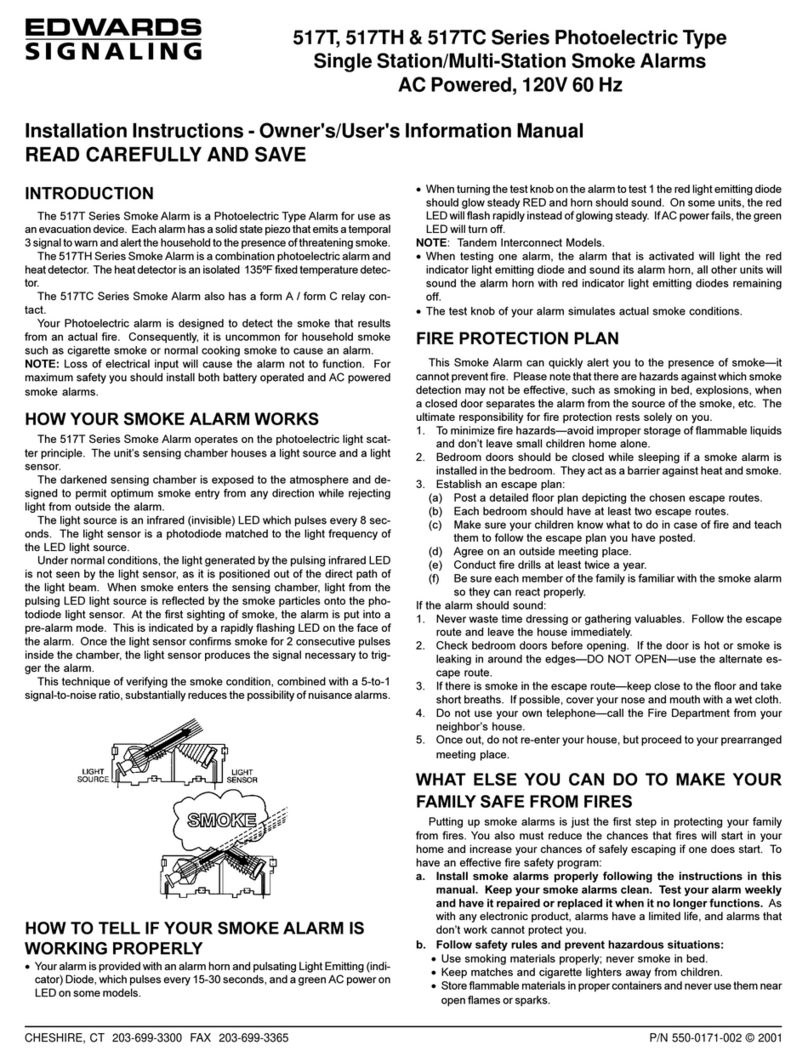
·Keep electrical appliances and cords in ood workin order and do
not overload electrical circuits.
·Keep stoves, fireplaces, chimneys, and barbecue rills rease-free and
make sure they are properly installed away from combustible materials.
·Keep portable heaters and open flames such as candles away from com-
bustible materials.
·Do not allow rubbish to accumulate.
c. Develop a family escape plan and practice it with your entire fam-
ily, especially small children.
·Draw a floor plan of your home and find two ways to exit from each
room. There should be one way to et out of each bedroom without
openin the door.
·Teach children what the smoke alarm si nal means, and that they
must be prepared to leave the residence by themselves if necessary.
Show them how to check to see if doors are hot before openin them,
how to stay close to the floor and crawl if necessary, and how to use
the alternate exit if the door is hot and should not be opened.
·Decide on a meetin place a safe distance from your house and make
sure that all your children understand that they should o and wait for
you if there is a fire.
·Hold fire drills at least every 6 months to make sure that everyone,
even small children, know what to do to escape safely.
·Know where to o to call the fire department from outside your resi-
dence.
·Provide emer ency equipment such as fire extin uishers and teach
your family to use this equipment properly.
WHAT TO DO IF THERE IS A FIRE
IN YOUR HOME
If you have prepared family escape plans and practiced them with your
family, you have increased their chances of escapin safely. Review the
followin rules with your children when you have fire drills so everyone will
remember them in a real fire emer ency:
a. Dont panic; stay calm. Your safe escape may depend on thinkin
clearly and rememberin what you have practiced.
b. Get out of the house followin a planned escape route as quickly as
possible. Do not stop to collect anythin or to et dressed.
c. Open doors carefully only after feelin to see if they are hot. Do not
open a door if it is hot; use an alternate escape route.
d. Stay close to the floor; smoke and hot ases rise.
e. Cover your nose and mouth with a cloth, wet if possible, and take short,
shallow breaths.
f. Keep doors and windows closed unless you open them to escape.
. Meet at your prearran ed meetin place after leavin the house.
h. Call the Fire Department as soon as possible from outside your house.
Give the address and your name.
i. Never re-enter a burnin buildin .
Contact your local Fire Department for more information on makin your
home safer from fires and about preparin your familys escape plans.
WHAT THIS SMOKE ALARM CAN DO
This alarm is desi ned to sense smoke enterin its sensin chamber. It
does not sense as, heat (except 517TH), or flames.
When properly located, installed, and maintained, this smoke alarm is
desi ned to provide early warnin of developin fires at a reasonable cost.
This alarm monitors the air and, when it senses smoke, activates its built-
in alarm horn. It can provide precious time for you and your family to
escape from your residence before a fire spreads. Such an early warnin ,
however, is possible only if the alarm is located, installed, and maintained
as specified in this Users Manual.
NOTE: This smoke alarm is desi ned for use within sin le residential
livin units only; that is, it should be used inside a sin le-family home or
one apartment of a multi-family buildin . In a multi-family buildin , the
alarm may not provide early warnin for residents if it is placed outside of
the residential units, such as on outside porches, in corridors, lobbies, base-
ments, or in other apartments. In multi-family buildin s, each residential
unit should have alarms to alert the residents of that unit. Alarms desi ned
to be interconnected should be interconnected within one family residence
only; otherwise, nuisance alarms will occur when an alarm in another livin
unit is tested.
IMPORTANT NOTE: WHAT SMOKE ALARMS
CANNOT DO
Smoke alarms will not work without power. Battery-operated
alarms will not work without batteries, with dead batteries, or if the batter-
ies are not installed properly. AC powered alarms will not work if their AC
power supply is cut off by an electrical fire, an open fuse or circuit
breaker, or for any other reason. If you are concerned about the reliability
of either the batteries or your AC power supply for any of the above
reasons, you should install both battery and AC powered alarms for
maximum safety.
Smoke alarms may not sense fire that starts where smoke
cannot reach the alarms such as in chimneys, in walls, on roofs, or on
the other side of closed doors. If bedroom doors are usually closed at
ni ht, alarms should be placed in each bedroom as well as in the common
hallway between them.
Smoke alarms also may not sense a fire on another level of a
residence or building. For example, a second-floor alarm may not
sense a first-floor or basement fire. Therefore, alarms should be
placed on every level of a residence or building.
The horn in your alarm meets or exceeds current audibility require-
ments of Underwriters Laboratories. However, if the alarm is located
outside a bedroom, it may not wake up a sound sleeper, espe-
cially if the bedroom door is closed or only partly open. If the alarm is
located on a different level of the residence than the bedroom, it is even
less likely to wake up people sleepin in the bedroom. In such cases, the
National Fire Protection Association recommends that the alarms be inter-
connected so that an alarm on any level of the residence will sound an
alarm loud enou h to awaken sleepers in closed bedrooms. This can be
done by installin a fire-detection system, by connectin alarms to ether,
or by usin radio frequency transmitters and receivers.
All types of smoke alarm sensors have limitations. No type of
smoke alarm can sense every kind of fire every time. In gen-
eral, alarms may not always warn you about fires caused by
carelessness and safety hazards like smoking in bed, violent
explosions, over-loaded electrical circuits, children playing with
matches, escaping gas, improper storage of flammable materi-
als, or arson.
NOTE: This alarm is not desi ned to replace special-purpose fire de-
tection and alarm systems necessary to protect persons and property in
non-residential buildin s such as warehouses, or other lar e industrial or
commercial buildin s. It alone is not a suitable substitute for complete
fire-detection systems desi ned to protect individuals in hotels and mo-
tels, dormitories, hospitals, or other health and supervisory care and
retirement homes. Please refer to NFPA 101,The Life Safety Code, and
NFPA 72 for smoke alarm requirements for fire protection in buildin s not
defined as households.
Installin smoke alarms may make you eli ible for lower insurance rates,
but smoke alarms are not a substitute for insurance. Home owners
and renters should continue to insure their lives and property.
PLACEMENT OF SMOKE ALARMS
THIS EQUIPMENT SHOULD BE INSTALLED IN ACCORDANCE WITH
THE NATIONAL FIRE PROTECTION ASSOCIATIONS STANDARD 72
(National Fire Protection Association, Batterymarch Park, Quincy, MA
02269).
For your information, the National Fire Protection Associations Stan-
dard 72, reads as follows:
Smoke detectors shall be installed outside of each separate sleepin area
in the immediate vicinity of the bedrooms and on each additional story of the
family livin unit includin basements and excludin crawl spaces and unfin-
ished attics. In new construction, a smoke detector shall be installed in each
sleepin room.
Where to Locate the Required Smoke Detectors in Existing Construction.
The major threat from fire in a family livin unit is at ni ht when everyone is
asleep. The principal threat to persons in sleepin areas comes from fires in
the remainder of the unit; therefore, a smoke alarm(s) is best located between
the bedroom areas and the rest of the unit. In units with only one bedroom
area on one floor, the smoke alarms should be located as shown in
Fi ure 1.
